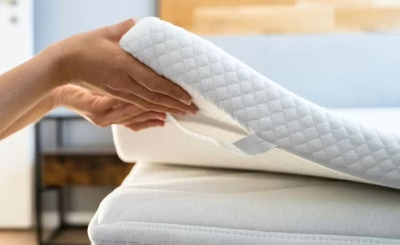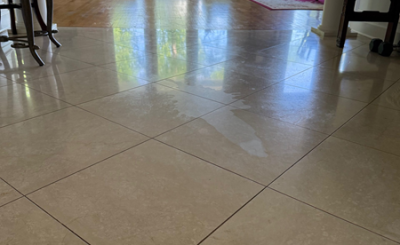Bed bugs are one of the most challenging pests to deal with, not only because they’re difficult to spot but also because their presence can lead to sleepless nights, physical discomfort, and the potential spread of diseases. Early detection is key to preventing a full-blown infestation and minimizing the health and emotional toll of these nocturnal creatures.
In this blog post, we’ll walk you through how to spot bed bugs in your home, the signs to look for, and the best practices for early detection so you can act quickly if you suspect an infestation.
What Are Bed Bugs?
Before diving into how to detect bed bugs, it’s important to understand what they are. Bed bugs (Cimex lectularius) are small, reddish-brown insects that feed on the blood of humans and animals. They are typically about the size of an apple seed (4-5 mm), and their flattened bodies make them easy to hide in cracks and crevices.
Bed bugs are most active at night, and they tend to hide during the day in places such as seams of mattresses, behind headboards, in cracks in the walls, and inside electrical outlets. They often go unnoticed for a long time, as they are elusive and can live for several months without a blood meal.
Common Signs of Bed Bugs
Knowing what to look for is essential for early detection of bed bugs. Below are the most common signs you should watch for:
- Bites on Your Skin
The most obvious sign of a bed bug infestation is the presence of bites. Bed bugs tend to feed at night, and their bites usually appear as red, itchy welts, often in clusters or rows. Unlike mosquito bites, bed bug bites tend to be smaller and may last longer, typically taking 1 to 2 weeks to heal.
It’s important to note that some people may not show immediate reactions to bed bug bites, making it harder to detect an infestation through bites alone. If you or your family members start noticing unusual, itchy marks that don’t resemble other insect bites, it could be time to check for bed bugs.
- Visible Bed Bugs
Bed bugs are tiny, but they’re not invisible. Adult bed bugs are about the size of an apple seed, while their eggs are smaller and white, resembling a speck of dust. They often hide in cracks and seams of mattresses, headboards, and furniture during the day, so you may not always spot them when they’re hiding. However, they will be visible if you inspect the right areas, especially after they’ve fed at night.
- Bed Bug Fecal Stains
Another clear sign of a bed bug infestation is the appearance of fecal stains. Bed bugs excrete small, dark, or blackish spots that look similar to ink stains, which are often found around the edges of your mattress, on bed linens, or on nearby furniture. These stains are a mixture of digested blood, and their presence is a strong indicator that bed bugs are in your home.
Look for fecal stains around seams, corners, and crevices where bed bugs are likely to hide. It’s also worth checking along baseboards, electrical outlets, and picture frames, as these pests are known to hide in the smallest spaces.
- Eggs and Eggshells
Bed bugs lay eggs that are about the size of a pinhead and are typically white or translucent. These eggs are often found in hidden areas like cracks, seams, and crevices near a bed or furniture. You may also find eggshells, which are left behind after the nymphs (young bed bugs) hatch.
If you see clusters of tiny, white, oval-shaped eggs or empty eggshells, this is a sign that the infestation has been around long enough for bed bugs to reproduce and multiply.
- Unusual Odors
Bed bugs release a musty, sweet odor that is often described as similar to the scent of coriander or overripe fruit. This odor is produced by the pheromones released by bed bugs, which they use to communicate with one another. While the odor is typically faint, a strong smell can indicate a larger infestation, especially if it is concentrated in areas where bed bugs are hiding.
- Shed Exoskeletons
As bed bugs grow, they molt, leaving behind their shed exoskeletons. These are light brown or transparent skins that bed bugs shed as they mature. You may find these skins in cracks, crevices, or around the areas where bed bugs typically hide. If you come across multiple shed skins, it’s a sign that the bed bug population in your home is growing.
How to Inspect Your Home for Bed Bugs
If you suspect you have bed bugs, conducting a thorough inspection is the first step. Here’s how you can check for these pests:
- Inspect Your Mattress and Bedding
Start by removing the sheets and inspecting your mattress and box spring. Look for visible signs of bed bugs, including adult bugs, eggs, and fecal stains. Pay close attention to seams, piping, and labels on the mattress, as these are prime hiding spots.
- Examine Furniture and Upholstery
Check any upholstered furniture, especially couches and chairs near your bed. Bed bugs like to hide in the folds of cushions and under furniture. Look for signs of bed bugs in the seams, corners, and underneath the cushions.
- Check Your Walls and Baseboards
Bed bugs may also hide in cracks and crevices in your walls or baseboards. Use a flashlight to inspect these areas and look for any visible signs of infestation. Pay close attention to areas near your bed and any furniture where bed bugs might congregate.
- Look Around Electrical Outlets and Light Fixtures
Bed bugs are notorious for hiding in hard-to-reach places. Check behind light switches, electrical outlets, and behind picture frames for any signs of bed bugs. A flashlight can help illuminate these areas and make it easier to spot any hidden pests.
- Inspect Your Luggage and Clothing
If you’ve recently traveled, bed bugs may hitch a ride in your luggage. Check your suitcase, clothes, and any items you brought home from hotels or public places. Even small nooks and crannies of luggage can harbor bed bugs.
What to Do If You Find Bed Bugs
If you find signs of a bed bug infestation in your home, don’t panic. Early detection is crucial, and there are steps you can take to resolve the issue. First, contact a professional pest control company specializing in bed bug treatments. DIY methods are often ineffective and can worsen the problem.
Additionally, keep your home clean and reduce clutter to limit the places bed bugs can hide. Be sure to follow any instructions from your pest control expert to ensure a thorough and successful treatment.
Conclusion
Early detection is key to preventing a bed bug infestation from taking over your home. By regularly inspecting your home for signs of bed bugs and acting quickly, you can protect yourself and your family from the stress and health risks that these pests bring. If you suspect a bed bug infestation, don’t hesitate to reach out to a professional pest control company to help you eliminate these pests for good. We recommend bed bug exterminator nyc.








